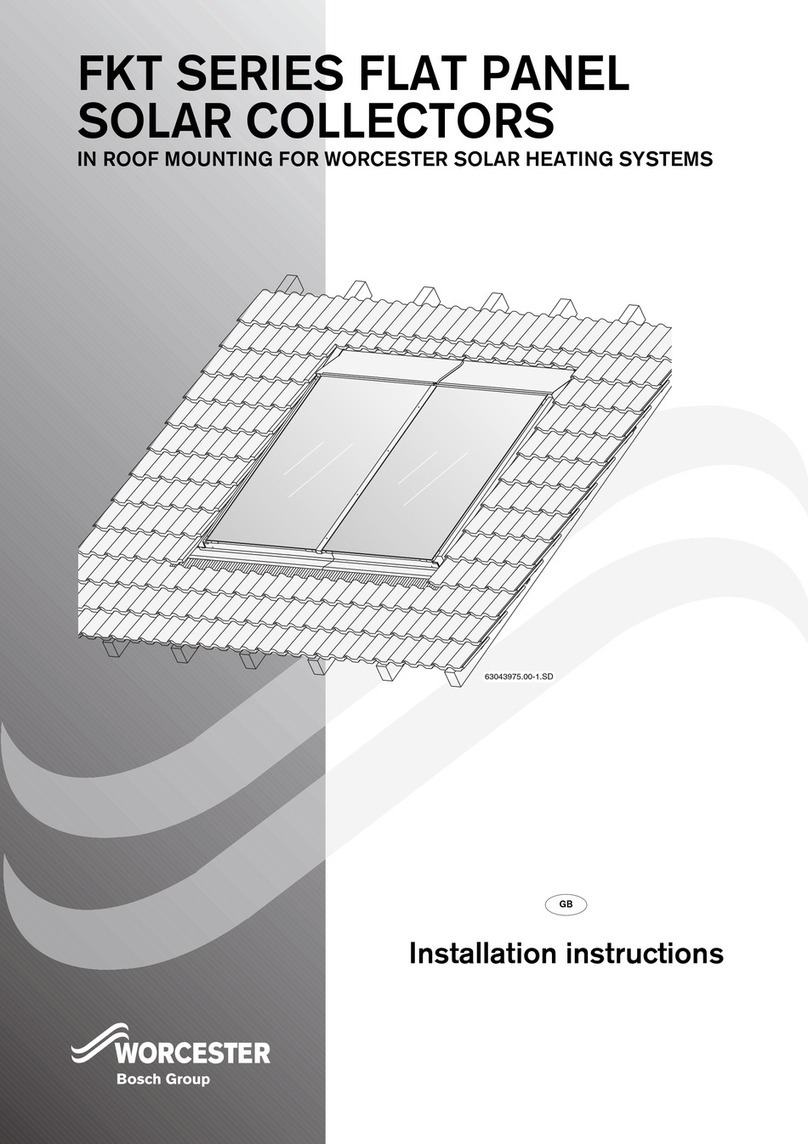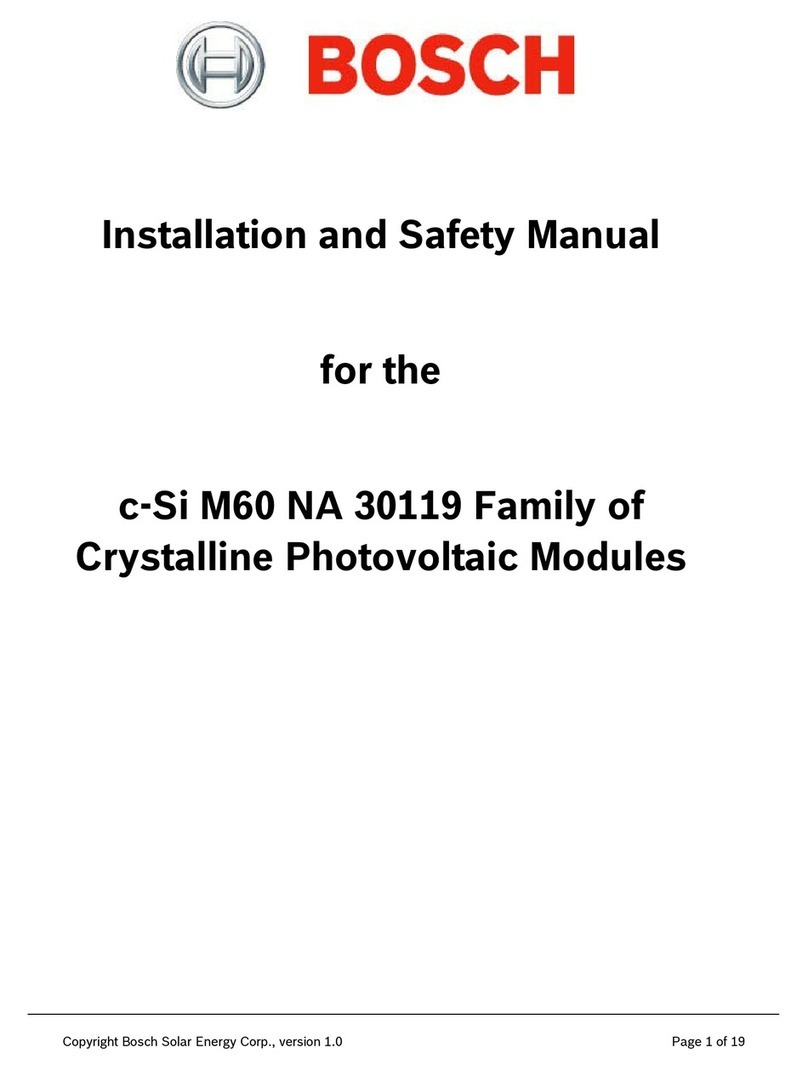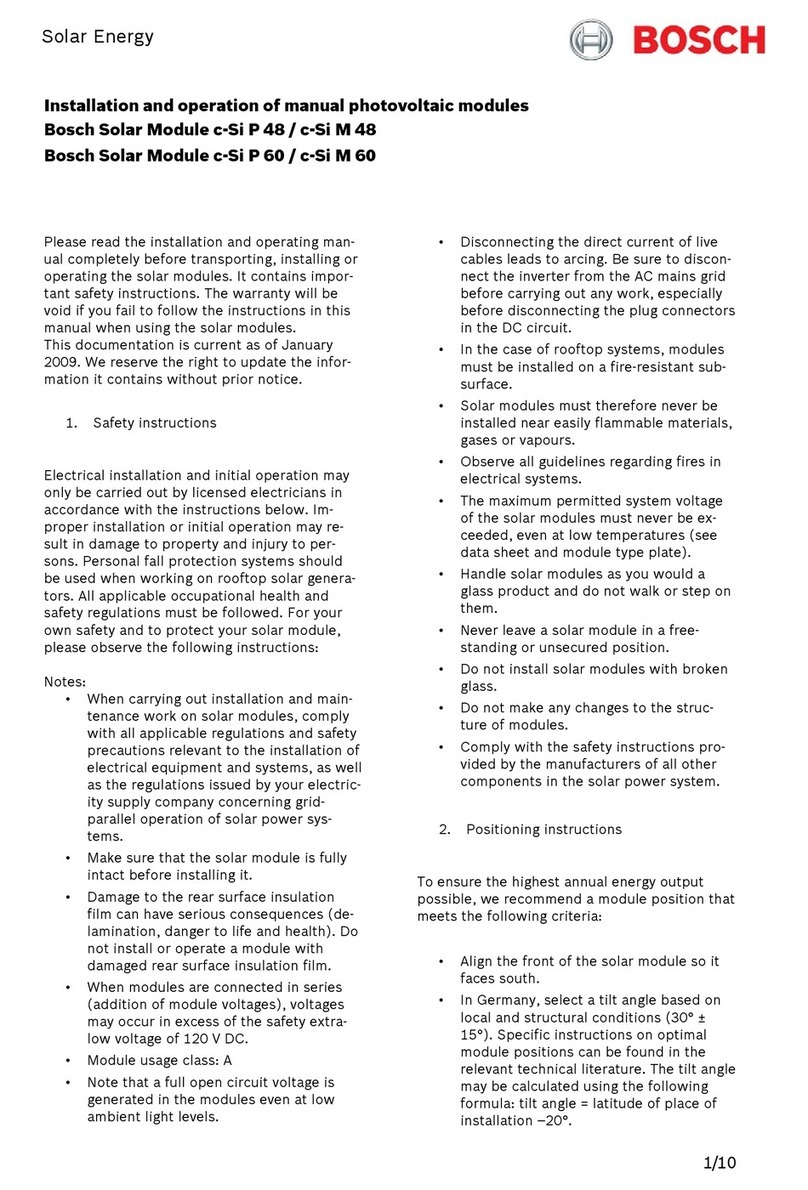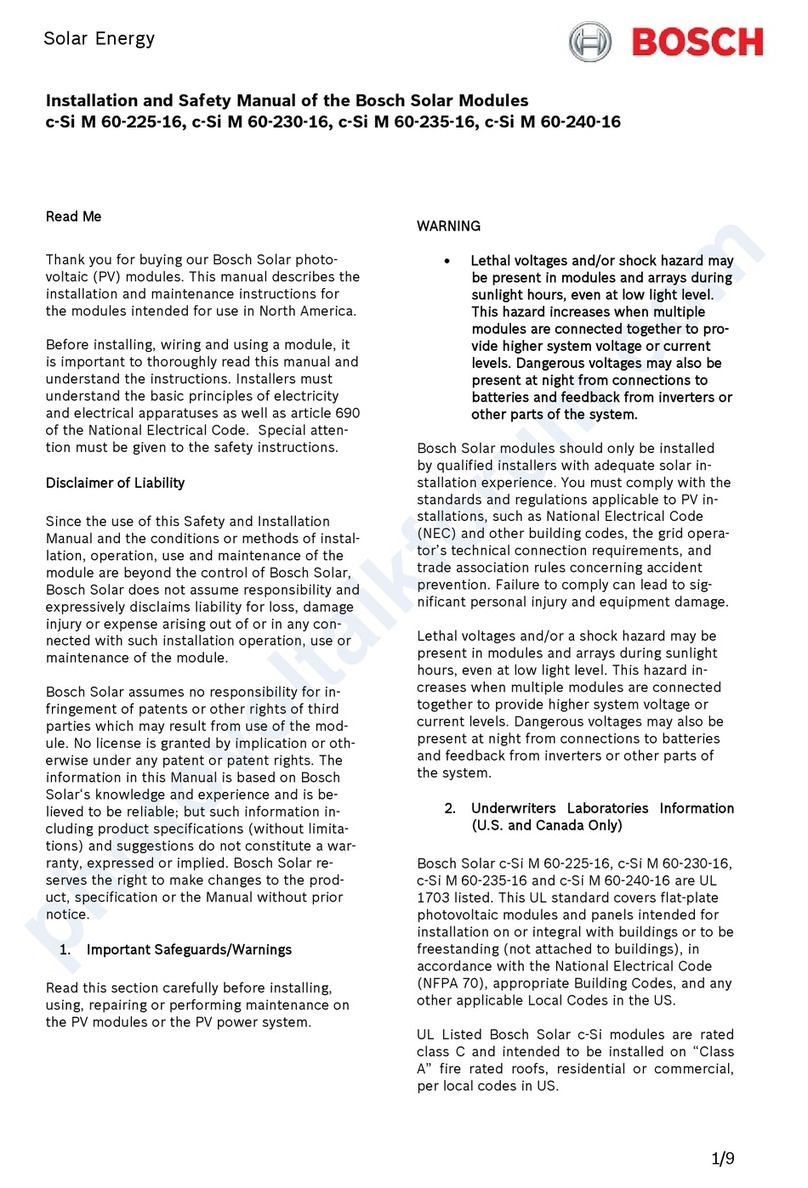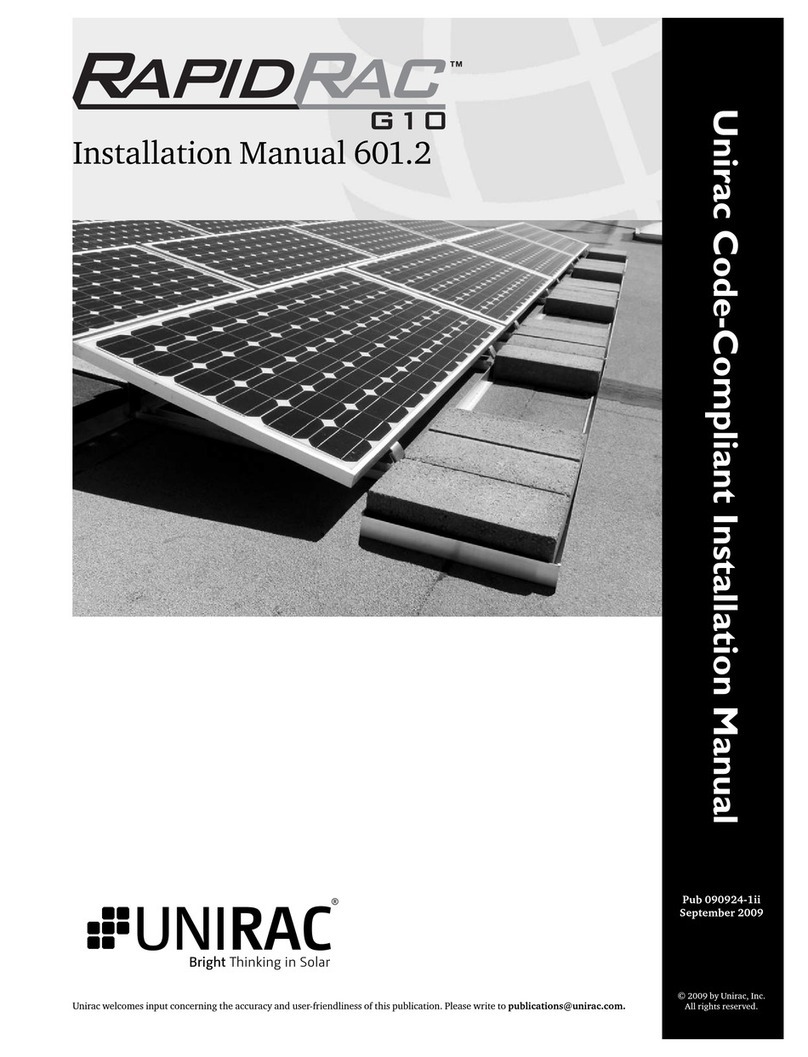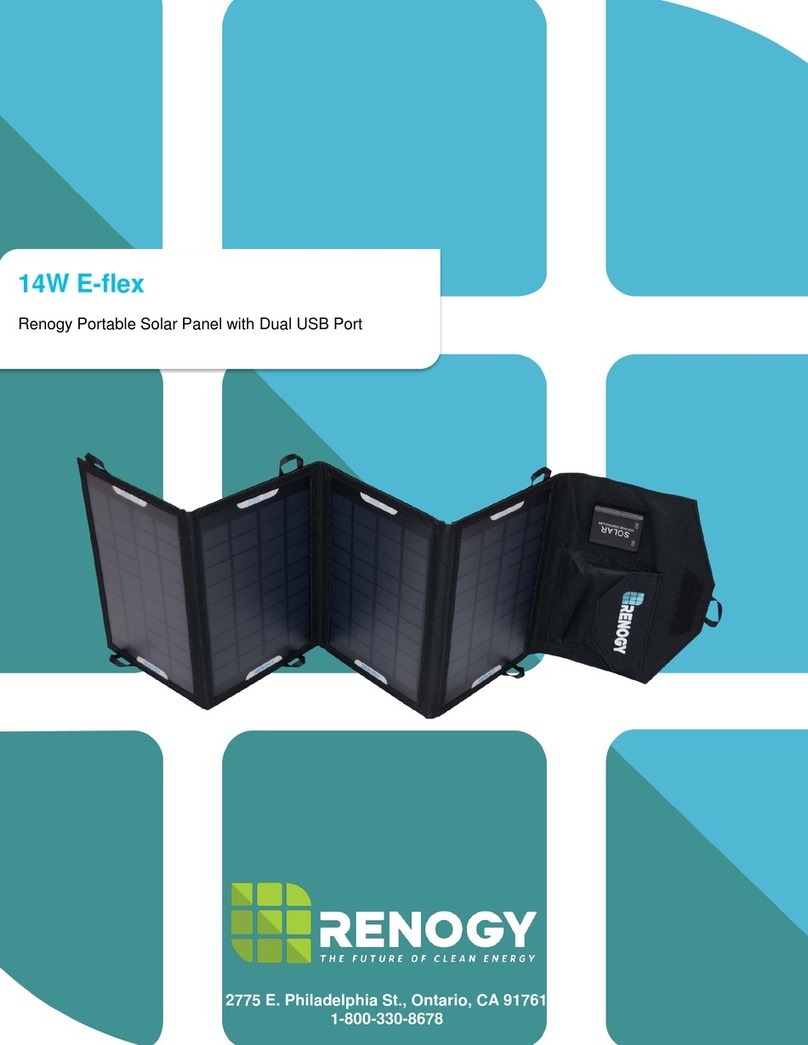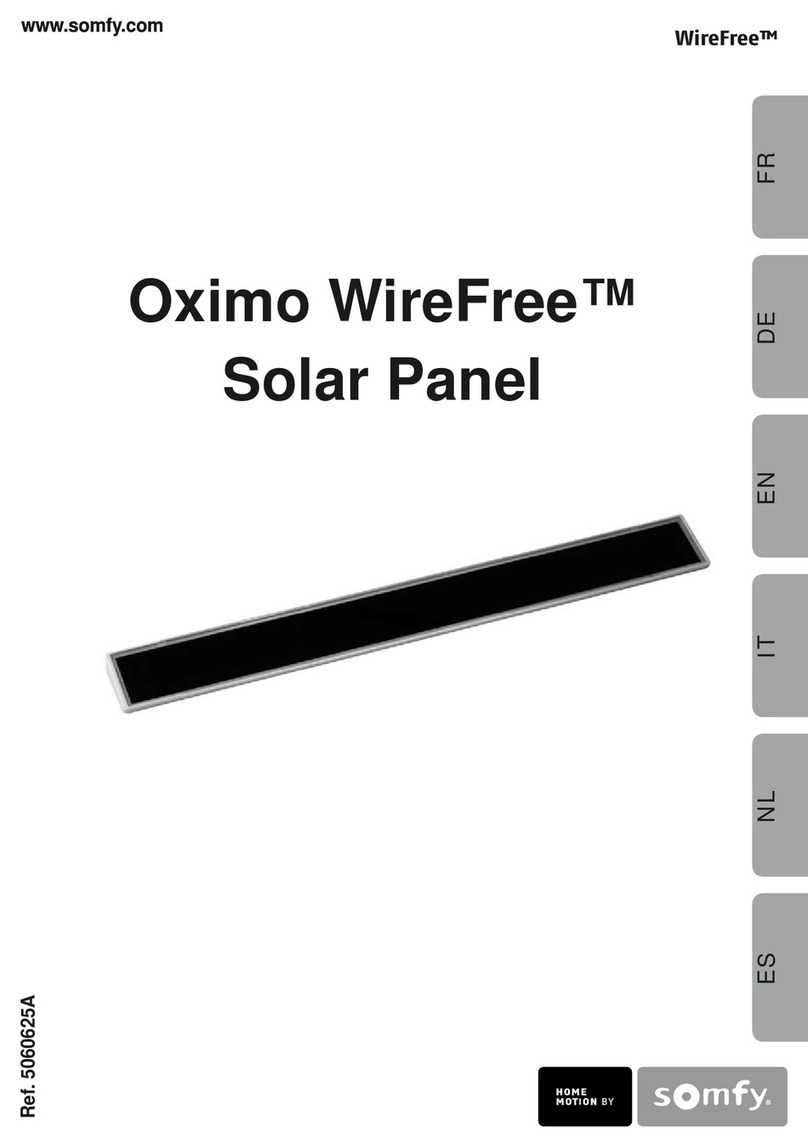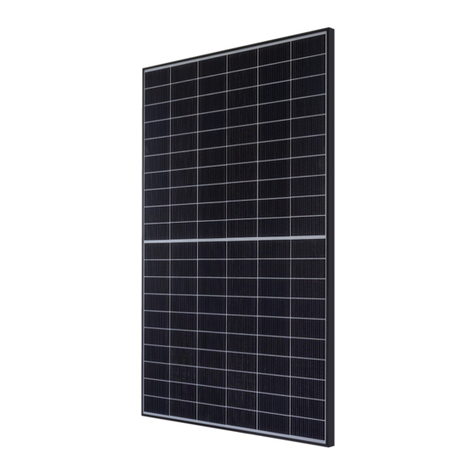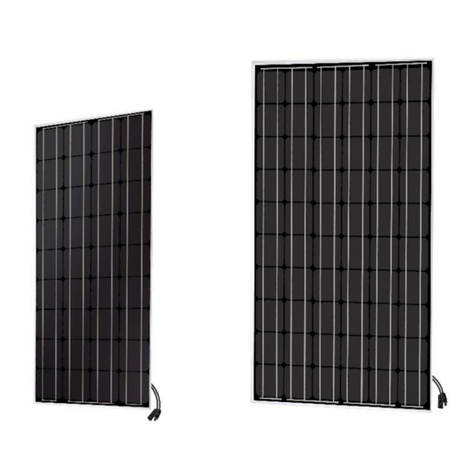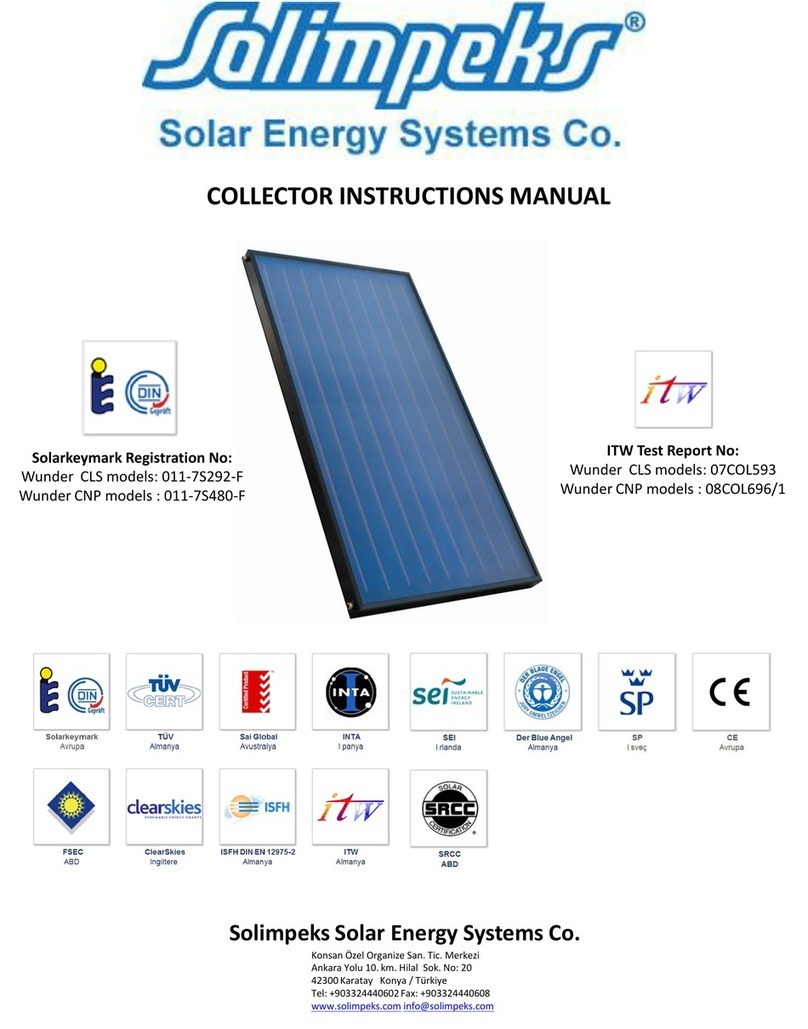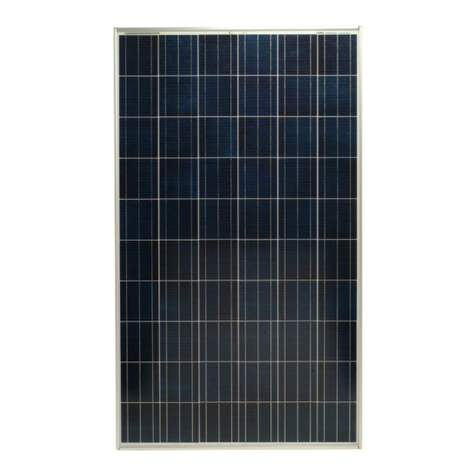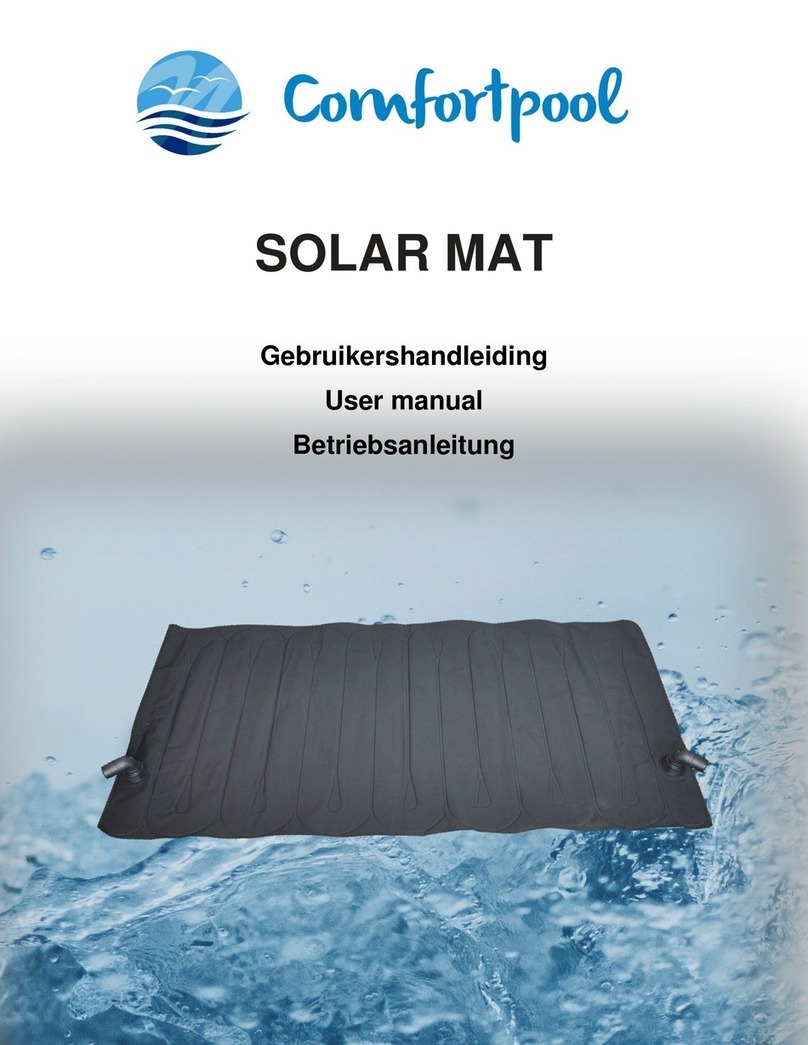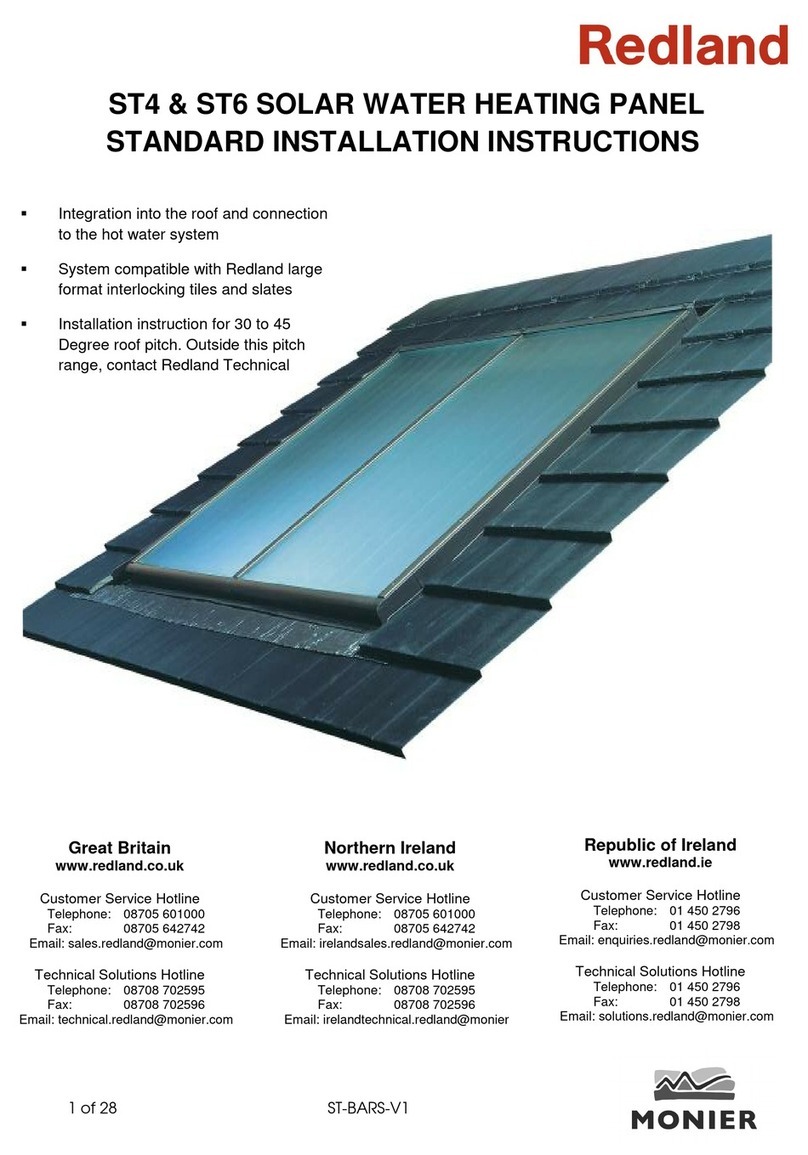Bosch Crystalline Solar Modules Operating instructions

de
deutsch
Bosch Solar Module c-Si M 48 I Bosch Solar Module c-Si M60 I Bosch Solar Module c-Si M60 S I Bosch Solar Module c-Si P60
Robert Bosch GmbH
Australia Operating instructions for products with module manufacturer code: 14, 17, 23
Issue 08/2013
Installation and Operation Guide
Crystalline Solar Modules
Bosch Solar Module c-Si M 60 EU

au
Bosch Solar Module c-Si M 60 EU I Bosch Solar Module c-Si M 60 S EU I Bosch Solar Module c-Si P 60 EU I Bosch Solar Module c-Si M 48 EU I Bosch Solar Module c-Si M 48 S EU
Module manufacturer code 14, 17, 23 Bosch Solar Energy AG
Table of contents
2 | Table of contents | Introduction
1 Introduction 2
2 Safety guidelines 3
3
Positioning guidelines 4
4
Installation guidelines 5
5
Circuitry guidelines 9
6
Electrical Connection 9
7
Grounding 10
8
Maintenance and care 10
9
Disposal 11
10
Storage and transport 11
Please read this installation and operation guide com-
pletely and carefully before you transport, install and
operate the solar modules! It contains (among other
information) important safety information which you must
know. When solar modules are used without observing all
instructions in this guide, all warranty and guarantee
claims towards us shall lapse. We reserve the right to
update the information in this guide without prior notice.
The installation, setup and commissioning of solar mod-
ules requires a high level of expertise and experience, and
therefore must be performed solely by specialists (e. g. a
specialist electrician) who can verify the successful com-
pletion of suitable training.
1 Introduction
These installation and operating instructions only apply to
the following products with Module Manufacturer Codes
14, 17 and 23 in the product ranges:
Bosch Solar Modules c-Si P 60 EU
Bosch Solar Modules c-Si M 60 EU
Bosch Solar Modules c-Si M 60 S EU
Bosch Solar Modules c-Si M 48 EU
Bosch Solar Modules c-Si M 48 S EU
The installation and operating instructions dated 01/2013
apply to the Bosch solar modules in the aforementioned
product range with the Module Manufacturer Codes 14,
17 and 23 only. These installation and operating instruc-
tions are not to be used for Module Manufacturer Codes
11 and 13.

au
english
Bosch Solar Module c-Si M 60 EU I Bosch Solar Module c-Si M 60 S EU I Bosch Solar Module c-Si P 60 EU I Bosch Solar Module c-Si M 48 EU I Bosch Solar Module c-Si M 48 S EU
Module manufacturer code 14, 17, 23 Bosch Solar Energy AG
Safety guidelines | 3
2 Safety guidelines
The setup and commissioning of the electrical system
may only be performed by a specialist electrician in
observance of the following guidelines, since improper
performance of this work can lead to damage and injury.
When performing work on solar generators – primarily
on roofs – suitable safety precautions (e. g. fall arresting
devices) must be used. The regulations set forth by
Employers‘ Liability Insurance Associations must abso-
lutely be observed. For your own safety and to safeguard
your solar module, please observe the following safety
guidelines:
During the setup and maintenance of solar modules,
the valid regulations and safety guidelines for the
installation of electrical devices and systems, as well
as the regulations set forth by the competent energy
supply company for the parallel grid operation of
solar power systems.
Prior to setup, the solar module must be inspected
for mechanical soundness. Damaged solar modules
(e. g. modules with broken glass, damage to the insu-
lation film at the reverse) may not be set up.
Damage to the insulation film at the reverse has se-
vere potential consequences (delamination, endan-
germent of life and health).
You should mount the solar module in such a way that
it is not affected by shade (even temporary or partial
shade caused by dormers, trees or similar obstacles).
Shaded PV arrays can lead to PV generator failure and
losses in performance.
The serial connection of the modules (addition of the
module voltages) may result in voltages above the
safety extralow voltage of 120 V DC!
The modules have been classified for Application
Class A: dangerous voltage (IEC 61730: 50 V, EN
61730: greater than 120 V)
Even when the light intensity is low, one must reckon
with the full atrest voltage of the modules – that is to
Important notice!
say, in the course of setup, one must always exercise
the greatest caution with regard to electrical faults
(e. g. short circuits).
The separation of conductors which carry direct cur-
rent can lead to light arcs. Therefore, prior to perform-
ing any work on the solar system – particularly prior to
separating the plug connectors in the direct-current
circuit – it is essential to disconnect the frequency
inverter from the alternating-current grid.
For roof-mounted systems, the modules must be
attached above a fireresistant surface.
Solar modules may not be installed near easily-
flammable substances, gases or vapors.
The guidelines on fires in electrical systems
(e. g. VDI 3819) apply hereto.
The maximum permissible totalsystem voltage for
the frequency inverter may never be exceeded. In
addition, due to the negative temperature coefficient
of the solar modules, the atrest voltage of the total
system at the minimum permissible temperature
must also be calculated (see data sheet and module
type sign).
The solar module is to be treated as a glass product
and may therefore not be used or walked on under
any circumstances in the transport container or used
as a placement area (e. g. for toolboxes), since this
can lead to visible or even invisible damage (e. g.
microcracks in the cells and with that, a premature
drop in output – among other faults).
The module frames may not be drilled, nailed or
welded to a contact surface.
The solar modules may not be held or transported by
their connector cables or by the connector socket.
Solar modules may never be left standing freely or
unsecured.
The safety guidelines set forth by the manufacturers
of other components of the solar system must be
followed.
The drainage drill holes in hollowchamber frames may
not be covered.
Bosch Solar modules meet the building regulation list
requirements for PV modules having a maximum glass
surface of by 2 m² as established by the DIBt
(Deutsches Institut für Bautechnik, [German Institute
for Building Technology]).

au
Bosch Solar Module c-Si M 60 EU I Bosch Solar Module c-Si M 60 S EU I Bosch Solar Module c-Si P 60 EU I Bosch Solar Module c-Si M 48 EU I Bosch Solar Module c-Si M 48 S EU
Module manufacturer code 14, 17, 23 Bosch Solar Energy AG
3 Positioning guidelines
In order to achieve the highest-possible annual energy
yield, we recommend positioning the module so as to
fulfill the following criteria:
You should mount the solar module in such a way that
it is not affected by shade (even temporary or partial
shade caused by dormers, trees or similar obstacles).
Shaded PV arrays can lead to PV generator failure and
losses in performance.
Prerequisite to installation on a flat roof is a hard
roofing seal per DIN 4102, Parts 4 and 7 – if there is
uncertainty about the roofing surface, please ask your
roofer.
When arranging modules in open field systems, suit-
able measures must be taken to ensure that readily
ignited organic materials (e.g. dry grass, hay) are
permanently removed from the vicinity of the system.
Position the front of the solar module, so that it faces
the Equator.
4 Installation guidelines
4 |Safety guidelines | Positioning guidelines | Installation guidelines
Select the angle of inclination according to the local
and structural factors (30° ± 15°). You will find spe-
cific data on optimum module positions in the perti-
nent specialized literature. The calculation of the
angle of inclination can be based on the following
formula: angle of inclination = latitude of the posi-
tioning locality - 20°.
All modules of a photovoltaic generator are to be
aligned at the same angle (horizontal as well as
vertical). In the event of angle deviations, separate
frequency converters are to be designated.
In order to ensure sufficient selfcleaning, the angle of
inclination must amount to at least 10°.
For optimized selfcleaning, a 15° minimum angle of
inclination is recommended.
Always ensure that the reverse side of the module is
well ventilated.
Attention!
Due to heat accumulation under the
modules there is an increased fire hazard
associated with rooftop installations
which do not meet the aforementioned
requirements.
You should mount the solar module in such a way that
it is not affected by shade (even temporary or partial
shade caused by dormers, trees or similar obstacles),
since this may lead to damage in the solar module,
such as formation of hot spots, PV generator failure
and losses in performance
Important note!
Take into account additional loads pro-
duced by the PV system's weight and
structural mount when carrying out the
structural analysis for the overall struc-
ture.
Modules must be mounted so that the rear of the
module does not come into contact with objects
behind it, even if a mechanical load is applied.
To avoid increased strain of the modules due to wind
load, it is necessary to observe minimum distances
from building boundaries according to DIN 1055-4.
A concentration of sunlight on the modules via mir-
rors or lenses is prohibited.
Avoid contact with salty water!
The crystalline solar modules made by Bosch Solar
Energy have been tested in accordance with the
following norms for their response to contact with
salty air:
– IEC 61701: 1995
– DIN EN 61701: 2000-08
– IEC 60068-2-52.
Please observe the test conditions indicated in the
norms when using the modules in salty air.
The system installer or operator must provide an
analysis of the building structure’s stability, deflec-
tion and loads.
Mount the modules on an adequately dimensioned,
permanently corrosion resistant, stable substructure.
The installation profiles are to be positioned in paral-
lel to one another.
The fastening points are to be aligned symmetrically
(see Figure 1).

au
english
Bosch Solar Module c-Si M 60 EU I Bosch Solar Module c-Si M 60 S EU I Bosch Solar Module c-Si P 60 EU I Bosch Solar Module c-Si M 48 EU I Bosch Solar Module c-Si M 48 S EU
Module manufacturer code 14, 17, 23 Bosch Solar Energy AG
Installation guidelines | 5
Important note!
Ensure you use the fastening sections as
indicated in tables 2 to 3.
Ensure that the mounting holes are correctly positi-
oned as in figures 2 and 3 when fitting the module
using mounting holes. You are also to use four corro-
sion resistant screws and nuts as per Table 1 and
washers with a minimum outside diameter of 12 mm
and a maximum of 14 mm.
When using clamps or direct attachment at the as-
sembly holes, the modules must be fastened flush to
the substructure at at least four points under as little
stress and tension as possible.
The solar module must be installed under as little
mechanical stress as possible and at a minimum
distance of 5 mm from the next module to allow for
any expansion in materials resulting from temperature
fluctuations.
Important note!
The substructure and solar module must
have the same thermal expansion coef-
ficient (e.g. aluminum).
Important note!
Solar modules must always be installed
in such a way that the cable inlets in the
junction box face downwards or side-
ways.
Ensure contact corrosion between the solar module
and substructure is prevented when different materials
are used.
Fasten the solar modules in such a way that they are
able to withstand all anticipated loads and any impacts
caused by weather conditions.
Use only corrosion resistant screws to install modules.
Ensure the support structure does not allow rainwater
or condensation water to reach the cable screw con-
nections in the junction box.
Warning!
The solar module must not stand in
condensation or stagnant water.
Module manufacturer code Screw diameter
14, 17, 23 M8
table 1: permissible fastening screws for direct installation
The supporting structure or substructure must be
adequately dimensioned based on a structural analy-
sis and adapted to the environmental conditions
locally to ensure that the maximum permissible de-
flection or deformation on the long side of the mod-
ule under a load of max. 4 mm is not exceeded. For
the short side, there is a max. value of 2 mm. You also
need to ensure that the module does not distort or
warp more than 10 mm across its diagonal line. Only
one of the named deformations is permissible in this.
Figure 1: Permissible layout of the fastening points and installation
profiles
The solar module can be attached with clamps, lay-in
systems or, alternatively, directly to the assembly
holes. If clamp systems are used, the clamp contact
surface must be at least 400 mm² for each fastening
point. Furthermore, under all conditions, the surface
area must be min. 400 mm² for each fastening point.

au
Bosch Solar Module c-Si M 60 EU I Bosch Solar Module c-Si M 60 S EU I Bosch Solar Module c-Si P 60 EU I Bosch Solar Module c-Si M 48 EU I Bosch Solar Module c-Si M 48 S EU
Module manufacturer code 14, 17, 23 Bosch Solar Energy AG
6 |Installation guidelines
pressure load rating ≤ 2400 Pa pressure load rating ≤ 5400 Pa
without central support with central support
screw fasten-
ing to assem-
bly holes
fastener
clamp system
on long sides
fastener
clamp system
on short
sides
slide-in or
lay-in system
slide-in or
lay-in system
table 2: vertical fastening area
500500
360
440
360
440
400200400
300
300
central support clamp section junction box

au
english
Bosch Solar Module c-Si M 60 EU I Bosch Solar Module c-Si M 60 S EU I Bosch Solar Module c-Si P 60 EU I Bosch Solar Module c-Si M 48 EU I Bosch Solar Module c-Si M 48 S EU
Module manufacturer code 14, 17, 23 Bosch Solar Energy AG
Installation guidelines | 7
table 3: horizontal fastening area
central support clamp section junction box
pressure load rating ≤ 2400 Pa pressure load rating ≤ 5400 Pa
without central support with central support
screw fasten-
ing to assem-
bly holes
fastener
clamp system
on long sides
fastener
clamp system
on short
sides
slide-in or
lay-in system
slide-in or
lay-in system
500500
300300
400 400
200
360
440
360
440

au
Bosch Solar Module c-Si M 60 EU I Bosch Solar Module c-Si M 60 S EU I Bosch Solar Module c-Si P 60 EU I Bosch Solar Module c-Si M 48 EU I Bosch Solar Module c-Si M 48 S EU
Module manufacturer code 14, 17, 23 Bosch Solar Energy AG
8 |Installation guidelines
When fastening modules with slide-in or lay-in systems,
the following should be observed:
Bearing area on frame: The frame must be covered on
the upper side by at least 5 mm and no more than
12 mm.
The slide-in or lay-in system must overlap the under-
side by at least 3 mm and have a surface area of at
least 2 mm width.
When fastening modules in the area of the module or
drainage corners, the following should be observed:
If corner clamps are used, a minimum cover area of
28 mm of the clamp must be ensured (length of the
assembly clamp).
The assembly clamp must overlie by min. 8 mm and
max. 12 mm on the frame (depth of assembly clamp).
figure 2: reverse side c-Si M 60 and M 60 S, P 60, manufacturers
14, 17 and 23
4 x Mounting holes for grounding cable
4 x Module mounting holes
430800 ± 0,5
20
1660 ± 2
800
1200
990 ± 2
100
15
Ø4,36
Ø9
Ø9
figure 3: reverse side c-Si M 48, c-Si M 48 S, manufacturer 23
Ø9
Ø4,36
20
335
Ø9
672 ± 0,5
1342 ± 2
990 ± 2
100
15
1200
800
4 x Module mounting holes
4 x Module mounting holes

au
english
Bosch Solar Module c-Si M 60 EU I Bosch Solar Module c-Si M 60 S EU I Bosch Solar Module c-Si P 60 EU I Bosch Solar Module c-Si M 48 EU I Bosch Solar Module c-Si M 48 S EU
Module manufacturer code 14, 17, 23 Bosch Solar Energy AG
Circuitry guidelines | Electrical connection | 9
5 Circuitry guidelines
You may only interconnect identical solar modules of the
same type and the same power class. Ensure that the
maximum permissible system voltage is not exceeded
when you connect the modules in series. In doing so, take
into account the effect of variations in temperature on the
voltage in solar modules, particularly since module voltage
increases at low temperatures.
When connecting modules in parallel, make sure that each
line connected in parallel contains the same number of
modules and that suitable measures are in place to protect
against power surges (e.g. line fuse). Make certain that the
indicated load capacity regarding the reverse current IR, as
stated in the datasheet, is not exceeded.
A PV module may supply a higher current and/or a higher
voltage under normal conditions than under standar-
dized test conditions. As a result the Isc and Uoc values
on the module should be multiplied by a safety factor of
1.25 to determine the rated voltages of components, the
rated current in cables, the sizes of fuses and sizing of
controls which are connected to the output of the PV
modules. Ensure that you comply with local applicable
standards and regulations.
6 Electrical connection
The solar modules are designed for use in grid-connect-
ed solar generators. If they are used for any other pur-
poses, differing technical features should be taken into
account. Solar modules may only be installed by quali-
fied specialists. In the process, they must comply with
the relevant industrial standards and regulations for PV
systems, such as the German Association for Electrical,
Electronic & Information Technologies regulations, DIN
standards, German Association of Energy and Water
Industries guidelines, the network operator's technical
connection conditions and employers' liability insurance
associations' accident prevention rules. We draw your
attention again to the following points in particular:
Only install non-damaged modules with clean, dry
cabling, plug connectors and junction boxes.
The solar modules, particularly the plug connectors
and tools, must remain dry during installation.
Disconnection devices must be fitted between the
module and inverter. The disconnect component
must be readily accessible in order to disconnect the
direct current side if danger should arise.
Make sure that all electrical connections are properly
secured.
Only use cabling which is suitable for outdoor instal-
lation to interconnect module strings (UV and ozone-
resistant, temperature resistance at least between
- 40° C and 110° C).
Cables must feature a minimum cross-section of
4 mm² and isolation must be approved for the maxi-
mum system open-circuit voltage.
Protect cabling against damage by such means as
suitable fastening with cable clips.
Important note!
Important note!
Connecting cables which are able to
move can lead to chafed points, thus
causing insulation damage to the con-
necting cable.
The cables must be laid in such a way that the cables
are not squashed or put under pressure in any other
way.
You must not open the junction box with pre-assem-
bled, connected cables.
The junction box, cabling and connection plug must
not be cleaned or dampened with substances con-
taining grease or alcohol.
Solar plugs pre-fitted in the factory must not be
removed.
Ensure that the module connection cable is relieved
of strain when installed.

au
Bosch Solar Module c-Si M 60 EU I Bosch Solar Module c-Si M 60 S EU I Bosch Solar Module c-Si P 60 EU I Bosch Solar Module c-Si M 48 EU I Bosch Solar Module c-Si M 48 S EU
Module manufacturer code 14, 17, 23 Bosch Solar Energy AG
10 |Electrical connection | Grounding | Mainenance and care
Important note!
Never remove or insert plug-in contacts
when the system is under load!
The connection cables should be installed in such a
way that the minimum bend radius of 60 mm is com-
plied with.
The connection cables are equipped with a high-qual-
ity plug system (original MC4) for photovoltaics
which latch on if correctly connected. The plugs are
marked with their respective polarity symbols (see
datasheet).
Ensure the polarity symbols are in the right position
when connecting plug connectors and modules and
when connecting solar modules to the inverter. Incor-
rect polarity can permanently damage all technologi-
cal components in the system.
All solar module frames and the support structure
must feature highly conductive connections to a
protective grounding system to eliminate the risk of
electric shocks. We recommend installing the ground-
ing system outside the building. Observe local statu-
tory regulations and recommendations given by the
inverter manufacturer and your insurance company.
Particularly in exposed locations, sufficient lightning
protection is recommended. Integration into existing
lightning-protection systems must occur in observance
of current country-specific norms and regulations. The
respective drill holes for grounding are marked on the
reverse side of the module frame.
Please perform the following grounding measures:
7 Grounding
Important notice!
Earthing / Grounding Requirements
In accordance with AS/NZS 5033 clause 4.4.2.2 PV mo-
dules and mounting frame earth connections are to be a
purpose-made fitting providing earthing or bonding
connections or purpose-made penetrating washers or
equivalent between the PV modules and mounting frame
for the connection of dissimilar metals purpose-made
fittings are installed to manufacturer’s instructions.
Cable lugs, earthing termination and bonding cables
are to be fixed by stainless steel bolts, washers and
penetrating washers to aluminium frames.
Earthing or bonding connections MUST BE arranged
so that the removal of a single module earth connec-
tion will not affect the continuity of the earthing or
bonding connections to any other module.
Little maintenance and care is required to deliver opti-
mum solar module performance. We recommend the
following items are checked or the following action
taken on a half-yearly basis to ensure optimum system
performance:
If modules are heavily soiled or dirty in places, from
bird droppings, for instance, it is recommended to
clean module glass surfaces with a soft brush and
lime-free water at module temperature. Do not use
aggressive cleaning agents, acids or alkaline solu-
tions.
Under no circumstances should there be increased
pressure during cleaning e.g. by pressing a brush so
strongly during cleaning, that this can lead to damage
to the antireflective coating of the glass for example.
In the case of intensive soiling, repeated cleaning or
soaking is recommended.
Any finger prints on the anti-reflection solar glass can
be removed with a microfiber cloth and distilled
water or isopropanol.
Check electrical and mechanical connections to
ensure they are clean, tightly fastened and intact. Any
anomalies must be remedied immediately.
8 Maintenance and care

au
english
Bosch Solar Module c-Si M 60 EU I Bosch Solar Module c-Si M 60 S EU I Bosch Solar Module c-Si P 60 EU I Bosch Solar Module c-Si M 48 EU I Bosch Solar Module c-Si M 48 S EU
Module manufacturer code 14, 17, 23 Bosch Solar Energy AG
Maintenance and care | Disposal | Storage and transport | 11
Defective or old solar modules must be appropriately
disposed of. These may not be disposed of in house-
hold waste.
9 Disposal
The handling of modules requires great diligence. There-
fore, caution is required when unpacking, transporting
and temporarily storing these modules:
Do not set the modules down forcefully on hard
ground or on the edges.
10 Storage and transport
Important notice!
Important otice!
The operator is recommended to check the system's
output on a regular basis.
The grass and weeds in and around open ground
area systems must be mowed regularly. This is neces-
sary to minimize the potential hazard of organic
material (e.g. dry grass, hay) combustion in the
vicinity of the system.
Avoid bending during transport or when unpacking.
Do not drop the modules.
Do not place any objects on the modules.
Do not handle the modules using sharp objects.
In the course of storage and transport, it must be
ensured that each solar module is sufficiently rein-
forced.
The stacking of packaging units can cause damage to
the solar modules and must definitely be avoided!
The solar modules are to be secured against over-
turning!
Layer pads must be used between the individual
solar modules.
We recommend storing all solar modules in dry interior
rooms and in the original packaging until their final
installation.
Modules being transported must be packaged securely in
accordance with local and European requirements. The
original packaging should be used wherever possible.
When setting the modules down or transporting them to
the immediate installation site (e. g. a roof), any damage
to the module is to be avoided.
The modules may not be grasped and transported on a
single frame component!
Installation guide last updated: 08/2013

de
Bosch Solar Energy AG
Robert-Bosch-Straße 1
99310 Arnstadt
Germany
Tel.: + 49 (0) 3628 66 44-0
Fax: + 49 (0) 3628 66 44-1133
www.bosch-solarenergy.com
This manual suits for next models
4
Table of contents
Other Bosch Solar Panel manuals
Popular Solar Panel manuals by other brands

LG
LG LG S1C-L4 Series installation manual
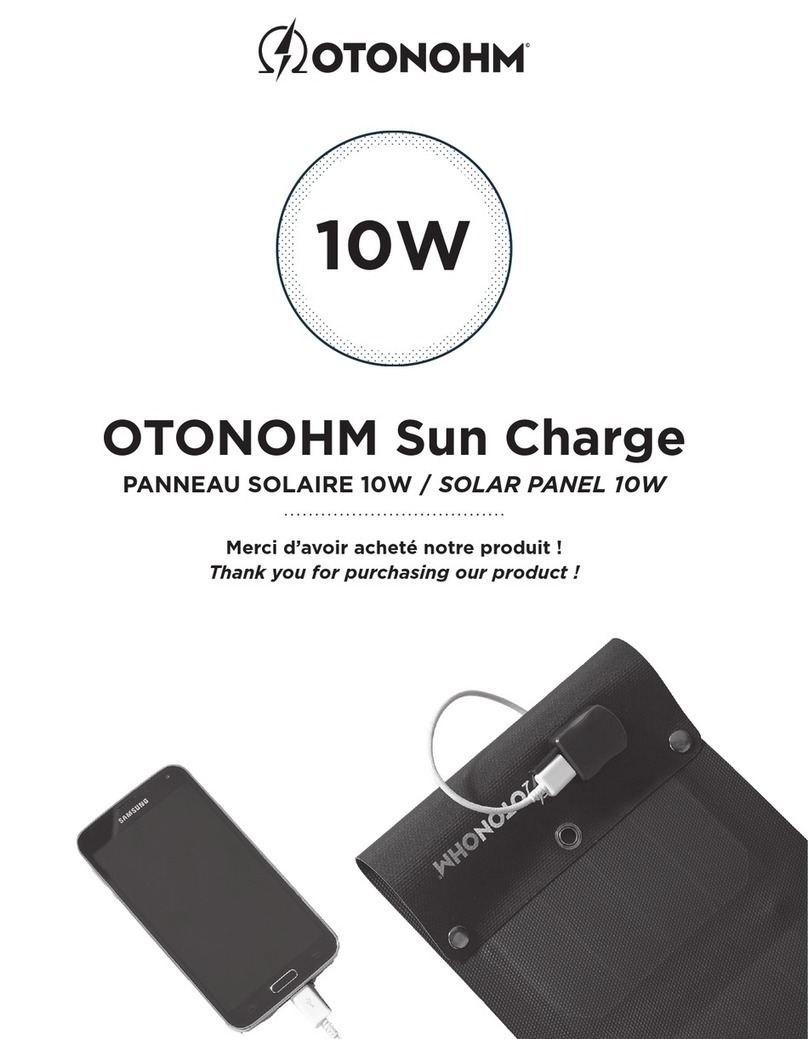
Otonohm
Otonohm Sun Charge 10W manual

Champion Global Power Equipment
Champion Global Power Equipment 201246 Operator's manual

Adventure Kings
Adventure Kings 10W user manual

Erco
Erco AKKUVAC ES-648E Original Operator's Manual

Conrad
Conrad TPS-103 2W/6V operating instructions
